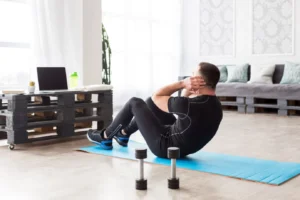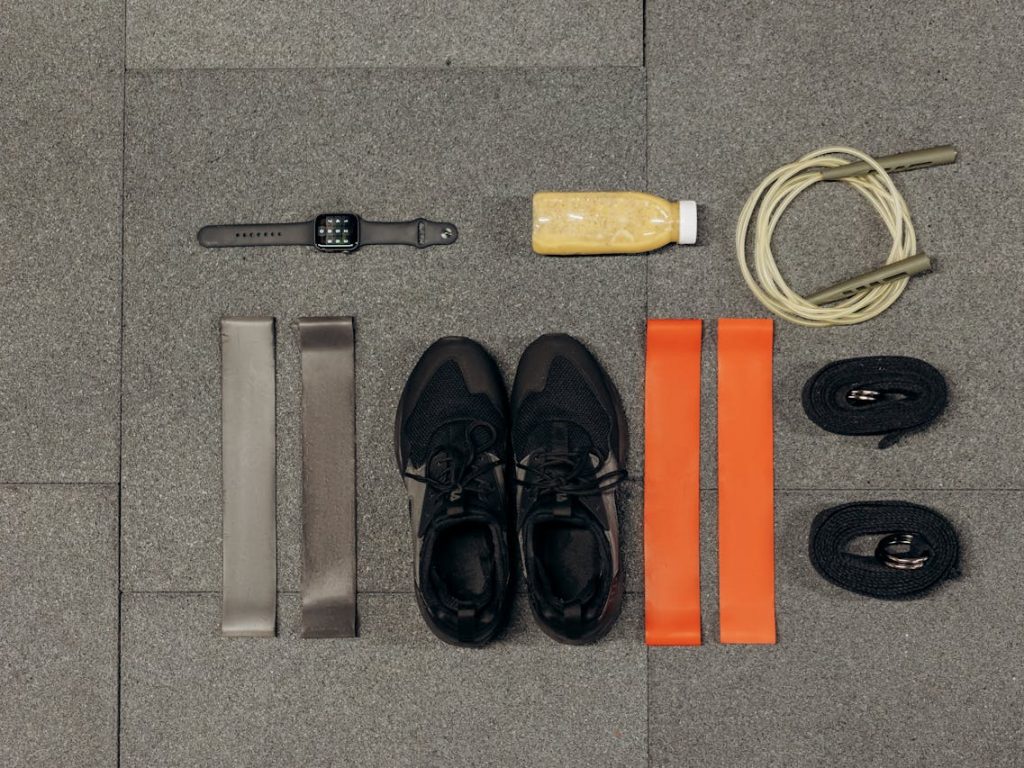


If you’re focusing on strength training, having the right tools is essential. Whether you’re a seasoned gym-goer or just beginning your fitness journey, there’s no shortage of equipment. Strength training accessories generally fall into two categories: portable and stationary. Each has its pros and cons, therefore it is important to know the difference in both of them before actually making a decision.
Definition: Portable strength or resistance training gear refers to devices that are compact, lightweight, and easily transportable. These can be used in various settings, including homes, parks, or even while traveling.
Pros:
Cons:
Definition: Stationary home resistance training equipment consists of more stable machines that are often located in gyms or home gyms. Intended for heavy-duty work and bigger exercises
Pros:
Cons:

There are a few things to think about when choosing between portable and stationary strength training equipment.
Portable: Dumbbells, kettlebells, resistance bands, weighted bags, and bodyweight exercises are great for when you can’t make it to the gym.
Stationary Equipment: Weight benches, barbells, dumbbells, and weight machines are traditional choices for stationary strength training options.
Caerus Strength Inc. provides portable resistance strength training equipment that is constructed of high-quality materials. It is created to be easy to follow for everyone, regardless of fitness level.
Whether to opt for portable or stationary resistance strength training equipment comes down to personal needs, preferences, and lifestyle. Each option has its pros and cons so you must take into account the mentioned points in this article. This way you can choose the right equipment that suits your workout goals as well, creating a great Ergometer user experience. Shop for strength training gear tailored to your needs from Caerus Strength Inc.
Absolutely! Stationary exercise equipment indeed has a wider range of exercises, however with the use of portable options you can still leave a streak to continue building muscle mass. And practice and the right form.
Resistance bands are versatile tools that can be used for a variety of exercises. They offer a low-impact workout, help with rehabilitation, and are suitable for individuals of all fitness levels.
It is generally advised to opt for a mix of both compound and isolation exercises which I normally suggest. While compound exercises work multiple muscle groups at the same time, isolation exercises target a specific group.
A good warm-up needs to include a few minutes of light cardio, some dynamic stretches, and joint mobility drills. Warm-Up for 5–10 minutes Before Your Workout.
Here at Caerus Strentgh we share useful information and provide solutions on daily routine exercise and workouts.
Privacy Policy | Sitemap
Copyright © 2025 Caerus Strength Inc. All Rights Reserved. Designed & Developed by SWFLMC
Karl, a graduate of the University of Michigan Engineering College in 1978 and Law School in 1981, has been a practicing trial lawyer in Chicago, Illinois for the last 41 years. After graduating from the University of Michigan Engineering College in 1978 and Law School in 1981, he practiced at the law firms of Williams & Montgomery, Ltd., Dressler Goldsmith and Fitch Even (since 1995). He is admitted to practice in the United States Patent & Trademark Office. Since 1989, Karl has conducted a variety of lawsuits relating to intellectual property, with a focus on patent litigation and suits seeking recovery for patent infringement. Karl served as managing partner of the Fitch Even firm for six years, and is co-chair of the firm’s Litigation Practice Group. A link to his Fitch Even bio is here: https://www.fitcheven.com/?t=3&A=2581&format=xml&p=5482.